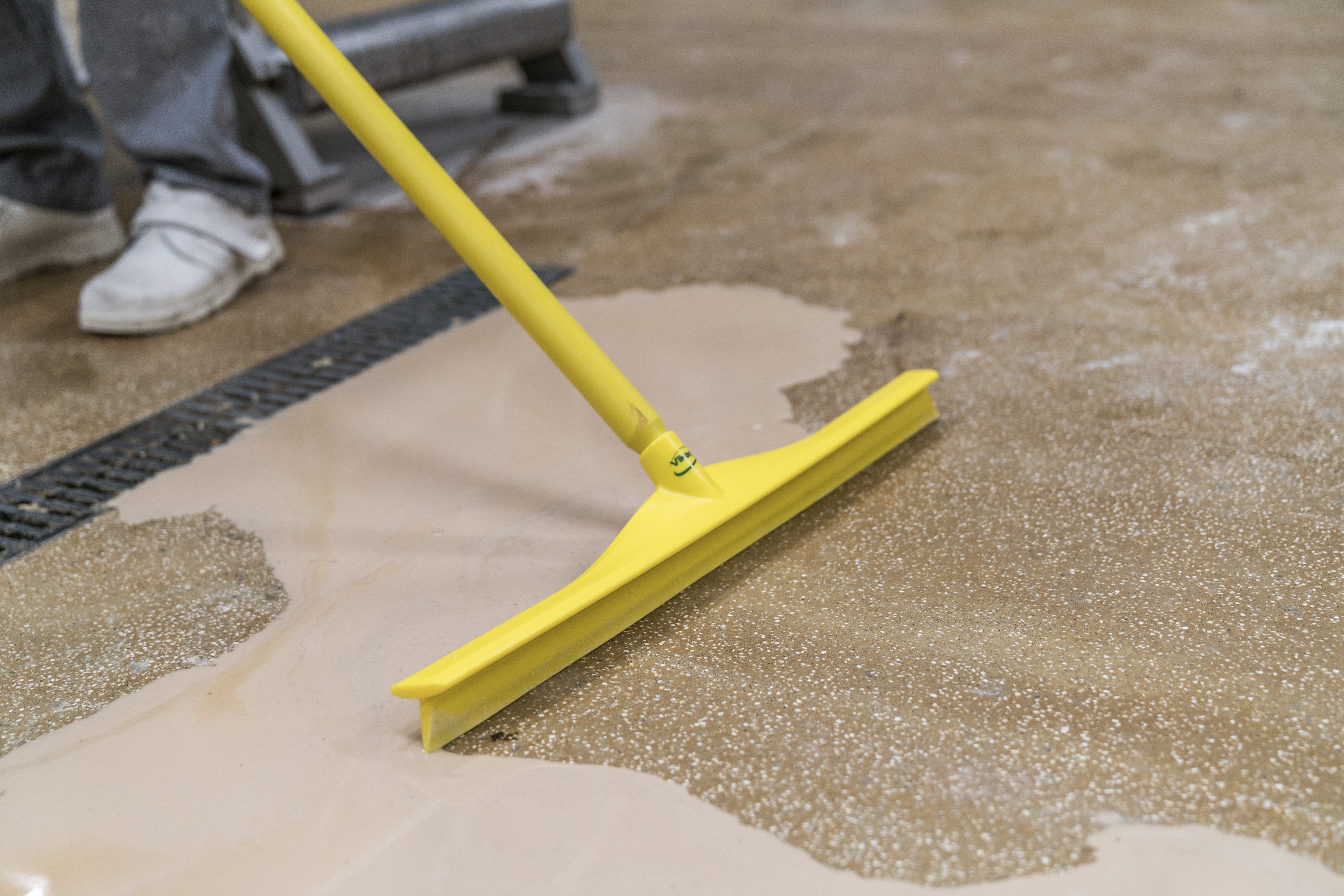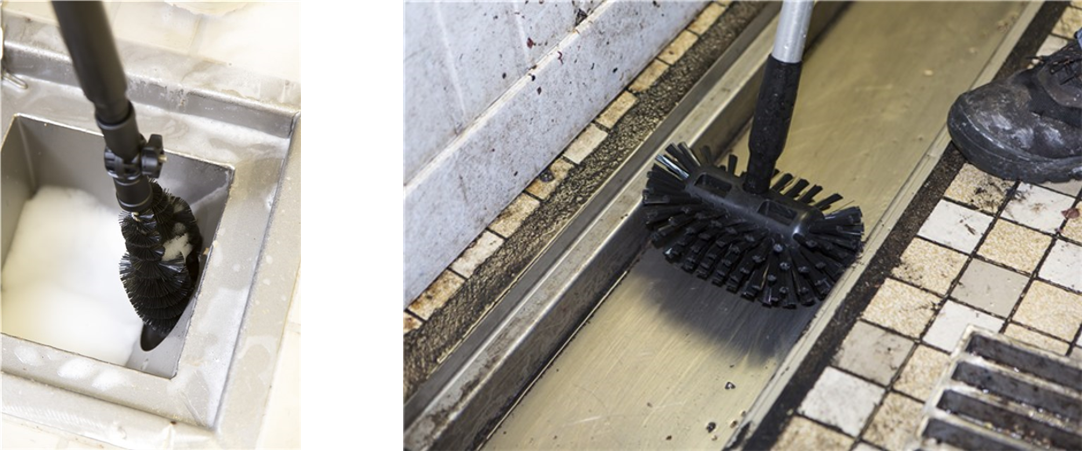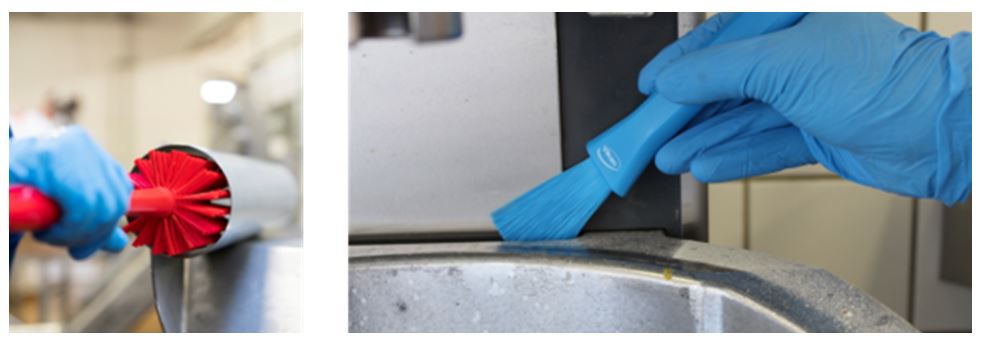
Listeria is a very common bacterium that adapts well in many environments. Once established in a food production facility, some strains of Listeria can be very difficult to eliminate. This post highlights the most common hideouts for Listeria in food production environments, and offers useful advice on how to optimise environmental Listeria control.
When to be concerned about Listeria?
Because Listeria is common in the environment and can be found in soil, water, animal guts and on raw foods, the bacteria can easily be introduced into and spread throughout food production facilities.
Listeria also can form biofilms that help them attach to the surface of floor, drains and equipment – making them more difficult to remove during cleaning, and protecting them from drought, heat and standard cleaning and disinfection chemicals. Listeria biofilm is often the source of food product cross-contamination.
Additionally, Listeria can grow in cold environments and can survive freezing temperatures. These conditions are often used to control microbial growth, but for Listeria they serve only to restrict the growth of competitors. This means that refrigerated and frozen foods still are at risk.
Most ready-to-eat food processing environments are chilled and provide the nutrients and moisture required for Listeria growth. So, there’s good reason for being concerned about Listeria contamination if you produce ready-to-eat, chilled food.
Listeria hideouts and control in food production facilities
1. Floors

Floors that are made of inappropriate materials or that have been installed poorly can lead to static water pools, water trap points or water absorption. Badly constructed or poorly sealed wall-to-floor or drain-to-floor joints often lead to water becoming trapped, as can poorly maintained and damaged floors with cracks, holes or gaps. All these situations can lead to Listeria colonisation. Consequently, the appropriate selection, installation and maintenance of your production floor are very important with regard to Listeria control.4
2. Drains

If Listeria is present in your food production facility, it will most likely be found in your drains. The reason for this is that drains act as a collection points for most of the Listeria-contaminated water on site, and then provide the nutrients and moisture required for the Listeria to grow.
Even though cleaning drains is an unpleasant and complex task, it is critical for Listeria control. Dirty drains can be a source of Listeria contamination, and flooded drains can spread listeria via pools of contaminated water on the floor. Drains should (if possible) only be cleaned during production downtime, and you’ll need to give aerosols time to settle before rinsing and disinfecting your food contact surfaces.
How to avoid Listeria contamination from floors and drains ??
Listeria can be transferred from contaminated floors and drains to other food production areas – and to food itself – in several ways. These include people’s footware, equipment and trolley wheels, and cleaning equipment.
The best way to avoid Listeria contamination from your floors and drains is to clean and disinfect them regularly. Remember to clean floor and drains in a way that minimizes contamination of other surfaces in the room. The use of high-pressure hoses or mechanical scrubbing will increase the risk of Listeria aerosolisation, where the bacteria spread through the air into other areas and onto equipment, food, and food contact surfaces. Instead, use dedicated colour-coded manual cleaning tools for floor and drain cleaning. Tools used to clean floors should have a different colour from those used to clean drains and from those used to clean food contact surfaces.
Processing equipment
Like floors and drains, hard-to-clean areas on and inside food processing equipment can allow for water accumulation and contamination, which can then lead to Listeria colonisation and growth.
To minimize the risk, it’s essential to use hygienically designed processing equipment, which is easy to clean and made of suitable food contact-compliant materials. The frequency of cleaning and disinfection should be based on risk assessment, but for equipment used to process chilled ready-to-eat foods, it should probably be at least once a day.
Daily cleaning should be supplemented with regular equipment stripdowns and deep cleaning to ensure that areas that are difficult to reach during daily cleaning are controlled. Again, the frequency of deep cleaning should be based on risk assessment.

Cleaning equipment
Cleaning equipment can be a major source of Listeria contamination – with surveys showing that up to 47 percent of cleaning equipment in food-processing areas test positive for Listeria (Campden BRI, 1990).
To prevent Listeria contamination, there are two important factors to consider for your cleaning equipment: hygienic design and proper maintenance.
